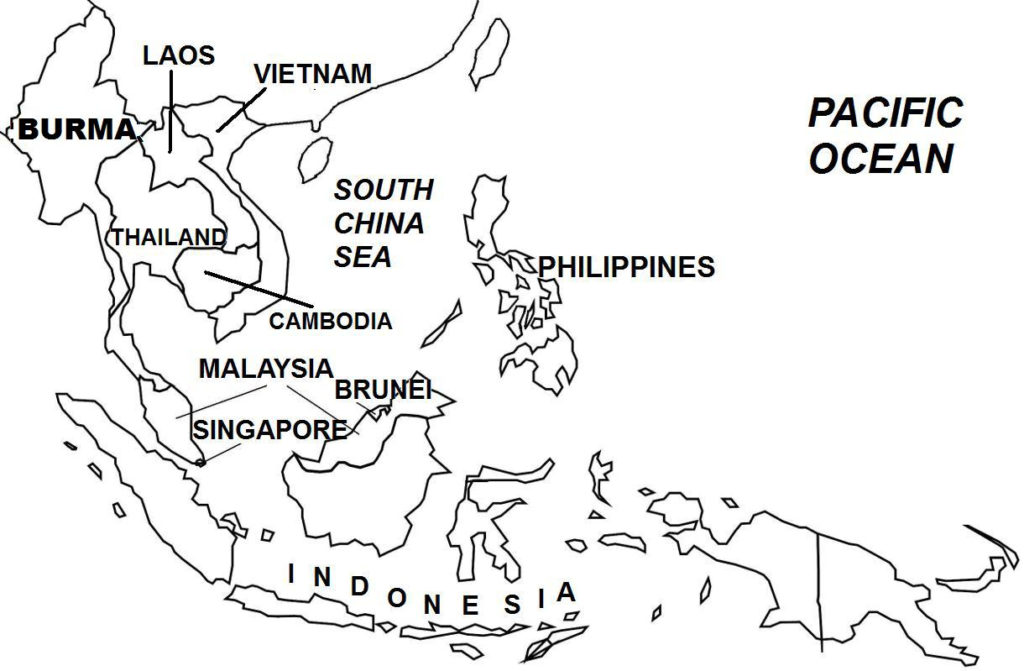On January 7, 1979, the Vietnamese Army captured the Cambodian capital of Phnom Penh in a blitzkrieg campaign and overthrew the Khmer Rouge regime. Pol Pot and his staff, together the bulk of the Khmer Rouge Army, made a strategic withdrawal to the jungle mountains of western Cambodia near the Thai border, where they set up a resistance government.

(Taken from Cambodian-Vietnamese War – Wars of the 20th Century – Twenty Wars in Asia)
Background The revolutionary movements that eventually prevailed in Vietnam and Cambodia (as well as in Laos) trace their origin to 1930 when the Vietnamese Communist Party (VCP) was formed. VCP soon reorganized itself into the Indochinese Communist Party (ICP) to include membership to Cambodian and Laotian communists into the Vietnamese-dominated movement. The great majority of ICP Khmers were not indigenous to Cambodia; rather they consisted mostly of ethnic Khmers who were native to southern Vietnam, and ethnic Vietnamese living in Cambodia.
In 1951, the ICP split itself into three nationalist organizations for Vietnam, Cambodia, and Laos respectively, i.e. Workers Party of Vietnam, Khmer People’s Revolutionary Party (KPRP), and Neo Lao Issara. In December 1946, the Viet Minh (or League for the Independence of Vietnam), a Vietnamese nationalist group that was formed in World War II to fight the Japanese, began an independence war against French rule (First Indochina War, separate article). The Viet Minh prevailed in July 1954. The 1954 Geneva Accords, which ended the war, divided Vietnam into two military zones, which became socialist North Vietnam and West-aligned South Vietnam. War soon broke out between the two Vietnams, with North Vietnam supported by China and the Soviet Union; and South Vietnam supported by the United States. This Cold War conflict, called the Vietnam War (separate article) and which included direct American military involvement in 1965-1970, ended in April 1975 with a North Vietnamese victory. As a result, the two Vietnams were reunified, in July 1976.
Meanwhile in Cambodia, the local revolutionary struggle ended with the 1954 Geneva Accords, which gave the country, led by King Sihanouk, full independence from France. The Accords also ended both French rule and French Indochina, and independence also was granted to Laos and Vietnam. Following the First Indochina War, most of the Khmer communists moved into exile in North Vietnam, while those who remained in Cambodia formed the Pracheachon Party, which participated in the 1955 and 1958 elections. However, government repression forced Pracheachon Party members to go into hiding in the early 1960s.
By the late 1950s, the Cambodian communist movement experienced a resurgence that was spurred by a new generation of young, Paris-education communists who had returned to the country. In September 1960, ICP veteran communists and the new batch of communists met and elected a Central Committee, and renamed the KPRP (Kampuchean People’s Revolutionary Party) as the Worker’s Party of Kampuchea (WPK).
In February 1963, following another government suppression that led to the arrest of communist leaders, the WPK soon came under the control of the younger communists, led by Saloth Sar (later known as Pol Pot), who sidelined the veteran communists whom they viewed as pro-Vietnamese. In September 1966, the WPK was renamed the Kampuchean Communist Party (KCP).
The KCP and its members, as well its military wing, were called “Khmer Rouge” by the Sihanouk government. In January 1968, the Khmer Rouge launched a revolutionary war against the Sihanouk regime, and after Sihanouk was overthrown in March 1970, against the new Cambodian government. In April 1975, the Khmer Rouge triumphed and took over political power in Cambodia, which it renamed Democratic Kampuchea.
During its revolutionary struggle, the Khmer Rouge obtained support from North Vietnam, particularly through the North Vietnamese Army’s capturing large sections of eastern Cambodia, which it later turned over to its Khmer Rouge allies. But the Khmer Rouge held strong anti-Vietnamese sentiment, and deemed its alliance with North Vietnam only as a temporary expedient to combat a common enemy – the United States in particular, Western capitalism in general. The Cambodian communists’ hostility toward the Vietnamese resulted from the historical domination by Vietnam of Cambodia during the pre-colonial period, and the perception that modern-day Vietnam wanted to dominate the whole Indochina region.
Soon after coming to power, the Khmer Rouge launched one of history’s most astounding social revolutions, forcibly emptying cities, towns, and all urban areas, and sending the entire Cambodian population to the countryside to become peasant workers in agrarian communes under a feudal-type forced labor system. All lands and properties were nationalized, banks, schools, hospitals, and most industries, were shut down. Money was abolished. Government officials and military officers of the previous regime, teachers, doctors, academics, businessmen, professionals, and all persons who had associated with the Western “imperialists”, or were deemed “capitalist” or “counter-revolutionary” were jailed, tortured, and executed. Some 1½ – 2½ million people, or 25% of the population, died under the Khmer Rouge regime (Cambodian Genocide, previous article).
In foreign relations, the Khmer Rouge government isolated itself from the international community, expelling all Western nationals, banning the entry of nearly all foreign media, and closing down all foreign embassies. It did, however, later allow a number of foreign diplomatic missions (from communist countries) to reopen in Phnom Penh. As well, it held a seat in the United Nations (UN).
The Khmer Rouge was fiercely nationalistic and xenophobic, and repressed ethnic minorities, including Chams, Chinese, Laotians, Thais, and especially the Vietnamese. Within a few months, it had expelled the remaining 200,000 ethnic Vietnamese from the country, adding to the 300,000 Vietnamese who had been deported by the previous Cambodian regime.
